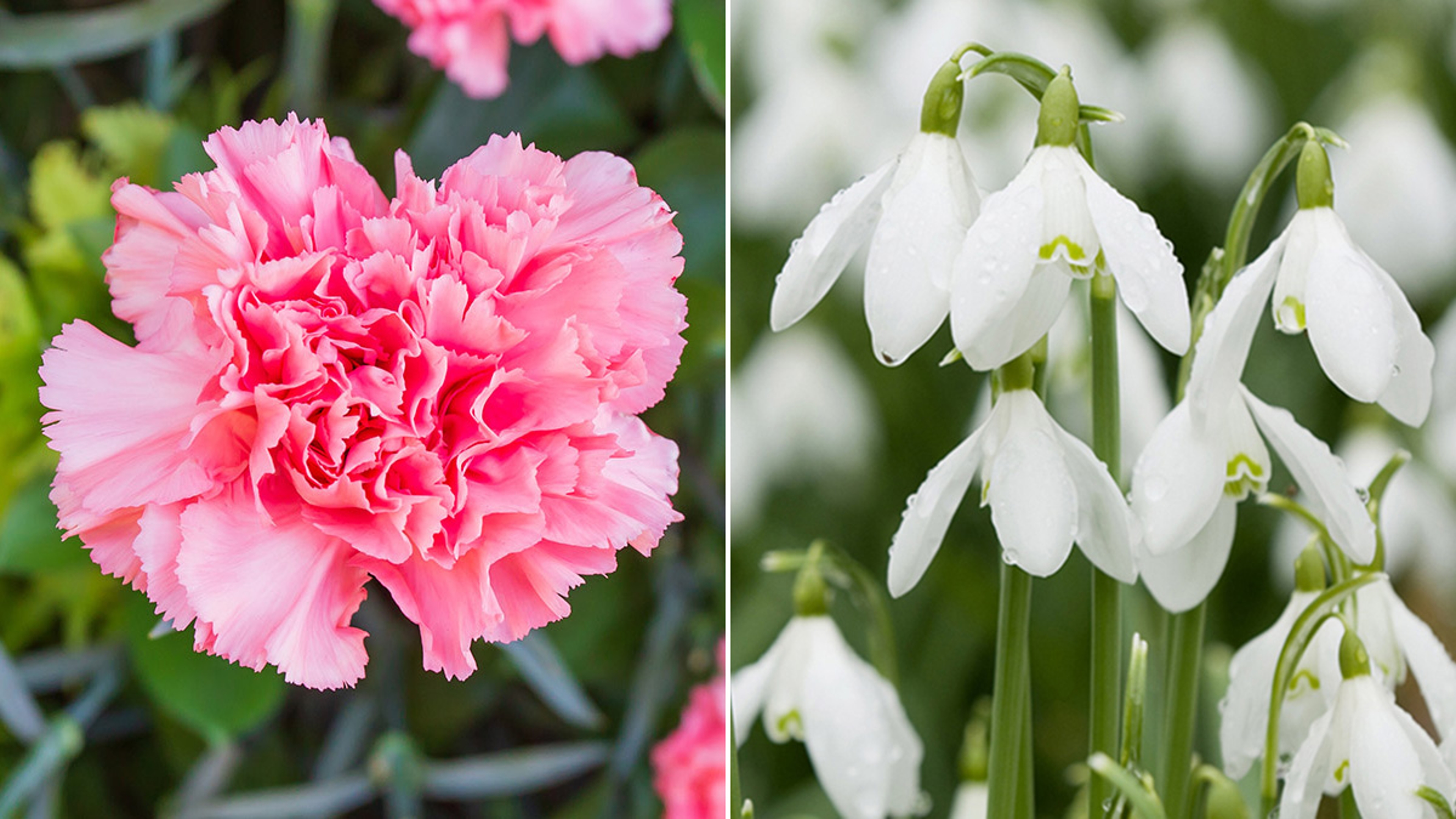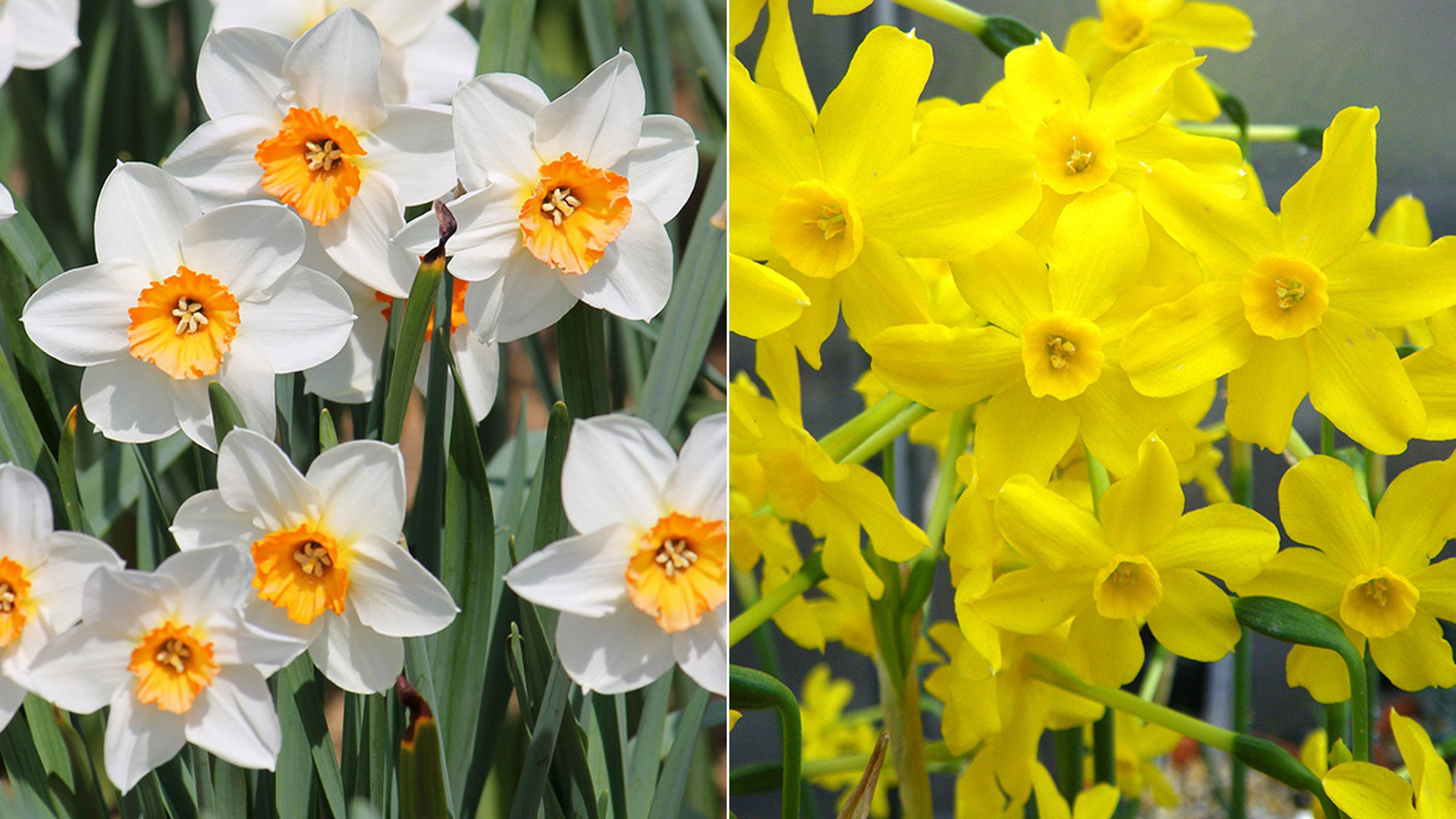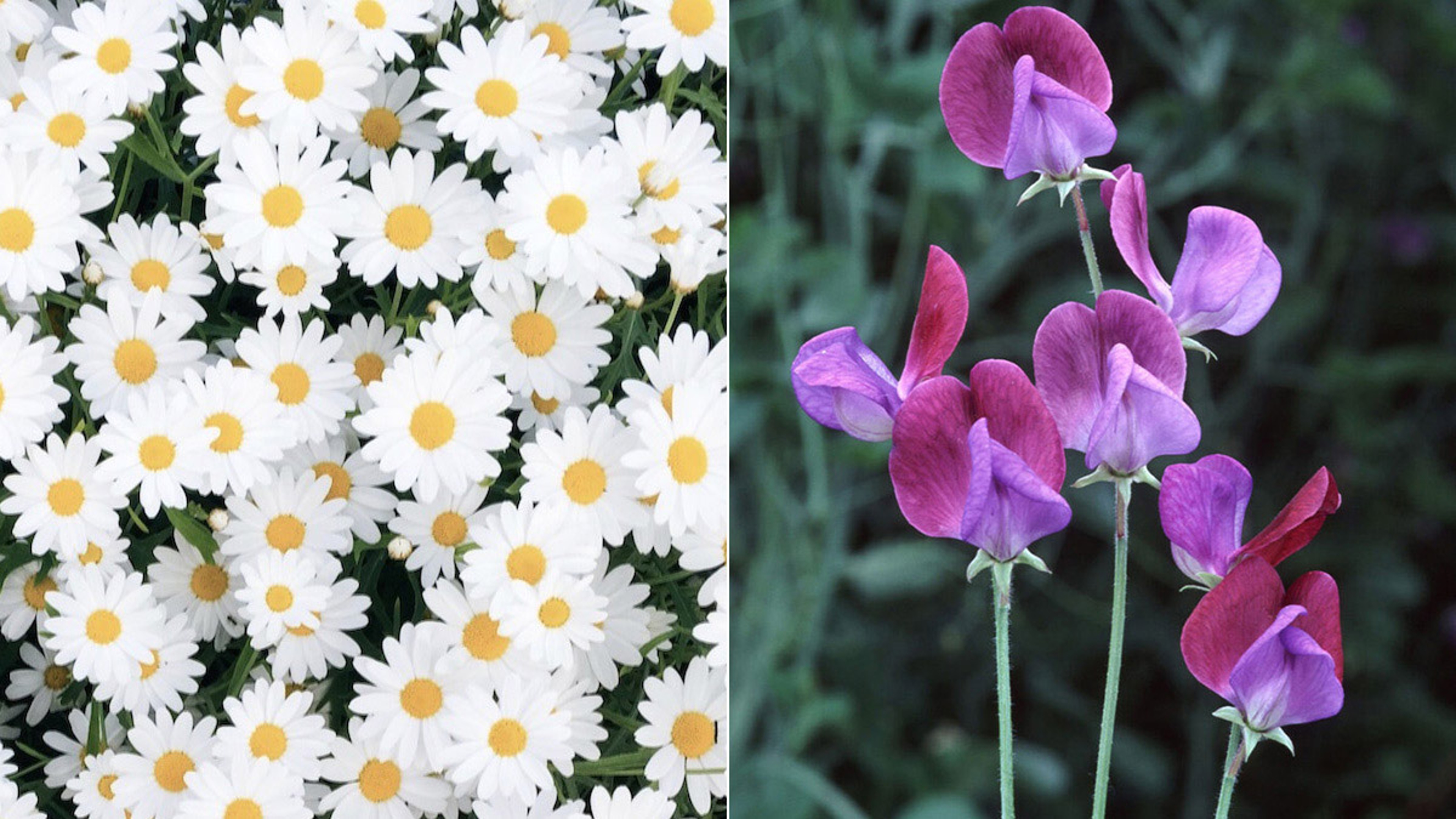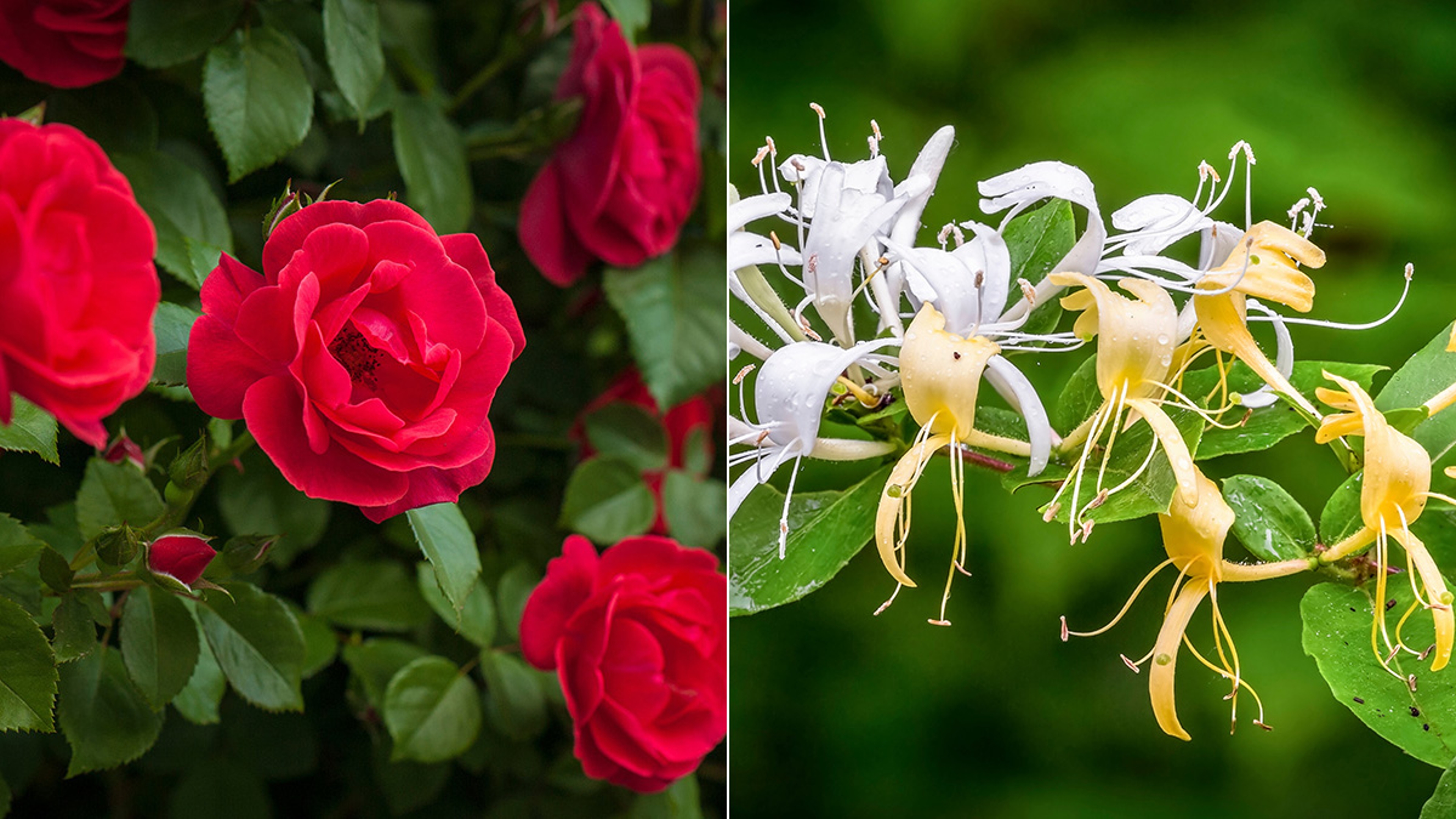December Birth Flowers: All About the Holly and Narcissus
Nothing says the holiday season like these two classic blooms.
Nov 16, 2023
December is a month filled with festivities, warmth (though not on the thermometer), and, with the approaching new year, the promise of a fresh start. And it's a time when nature displays its own form of celebration through the vibrant blooms that are its birth flowers.
Though these two beloved specimens have very different appearances, there's no denying they both bring a touch of nature's magic to the holiday season. Whether you're looking for protection, love, or a new beginning, these flowers embody the spirit of December.
What are the December birth flowers?
The December birth flowers are the holly and narcissus, particularly the paperwhite variety.

Holly (Ilex aquifolium) is an evergreen shrub or small tree known for its glossy, dark green leaves and vibrant round or oval berries. The leaves are often adorned with sharp, spiky teeth or thorns along their edges, and the berries are most commonly red in color (but can also be orange or yellow). The plant produces small flowers that are typically greenish-white and bloom in late spring. Holly is a popular choice for holiday decorations, especially during Christmas.
Paperwhite narcissus (Narcissus papyraceus) is a delicate and fragrant variety of narcissus, a genus of plants that also includes daffodils. It is characterized by its graceful, slender stems that bear clusters of white, star-shaped flowers, as well as its sweet and citrusy fragrance. Paperwhites typically bloom in late fall to early winter, making them a popular choice for indoor decorations and centerpieces during the holiday season.
What is the history of holly?
Holly has roots in pagan traditions and pre-Christian cultures. In Celtic and Druidic beliefs, holly was considered a sacred plant with protective qualities, and was believed to ward off evil spirits and bring good luck to homes, especially during the winter solstice.
With the spread of Christianity, holly took on new symbolism. Its prickly leaves were seen as representing the crown of thorns worn by Jesus during the crucifixion, and the red berries symbolized his blood. During the Middle Ages, holly was commonly used in medieval Christmas festivities, and was hung in homes and churches as a symbol of hope and protection during the holiday season.

What does holly mean?
Holly symbolizes protection, love, and hope. It is often associated with the ideas of rebirth and renewal, making it a fitting choice for December, a month that marks the end of one year and the beginning of another.
How to care for holly
Holly is a relatively low-maintenance plant, but you still need to provide it with a certain level of care to keep it happy and healthy.
- Soil: Holly prefers well-draining soil. Ensure the soil around the plant doesn't become waterlogged, as this can lead to root rot.
- Sunlight: Holly generally thrives in full sun to partial shade. The more sunlight the plant is exposed to, however, the more berries it will produce.
- Watering: Provide consistent moisture, especially during dry spells. Water newly planted holly regularly until it's established. Once established, water during dry periods, but avoid overwatering, as holly prefers slightly drier conditions than many other plants.
- Mulching: Apply a layer of organic mulch around the base of the holly to conserve soil moisture, regulate temperature, and suppress weeds. Keep the mulch away from the trunk to prevent rot.
- Pruning: Prune holly as needed to maintain its shape and size. Pruning can be done in late winter or early spring, before new growth begins. Be careful when handling holly, as the leaves can be prickly.
- Fertilization: While holly typically does not require heavy fertilization, you can apply a balanced, slow-release fertilizer in the spring to encourage healthy growth.

3 interesting facts about holly
1. Wildlife food source
Holly berries are a valuable food source for wildlife, especially during the winter, when other food options are scarce. Birds, such as robins and thrushes, rely on holly berries for sustenance.
2. Woodwork & crafts
Holly wood is known for its pale color, density, and fine grain. It's highly prized for use in woodworking and crafting, particularly for inlays, veneers, and fine turning work.
3. National tree & state symbols
Holly is the state tree of Delaware and national tree of the British Isle of Jersey. It's also the state flower of Mississippi.
December birth flower gift ideas
What is the history of narcissus?
Paperwhite narcissus is native to the Mediterranean region, particularly areas around Spain and Portugal. Its origins can be traced back to ancient Greece and Rome, where it was cultivated for both its beauty and sweet fragrance.
The name "narcissus" has its origins in Greek mythology. According to legend, Narcissus was a beautiful young man who fell in love with his own reflection and, after withering away and dying, turned into the flower that now bears his name.

What does narcissus mean?
The paperwhite narcissus symbolizes renewal, purity, and new beginnings. Those representations, plus the fact they are winter-blooming flowers, make paperwhites a popular holiday gift.
The paperwhite narcissus also has significant meaning in various cultures and religious traditions. It is a popular flower to use during Hanukkah, as the ideas it represents — namely light, hope, and rebirth — align with the holiday's themes. Also, in some Christian traditions, paperwhites symbolize the birth of Christ.
How to care for paperwhite narcissus
Paperwhites are typically treated as temporary indoor plants, but, depending on where you live, can grow outdoors as well.
Indoor care
- Planting: Plant the bulbs in a shallow container filled with well-draining potting mix, stones, or even water. Ensure the bulbs are placed close together but not touching.
- Watering: Add enough water to submerge the lower half of the bulbs. Keep the water level consistent so the bulbs remain moist but not submerged, and monitor the water level to prevent rot.
- Light: Place the containers in a bright location with indirect sunlight, such as near a sunny window. Avoid placing them in direct sunlight, as this can cause the bulbs to grow too quickly and become leggy.
- Temperature: Maintain a consistent temperature of 50 to 60 degrees. Slightly cooler temperatures help promote strong, sturdy growth.
- Staking: As the stems grow taller, you may need to provide support to prevent them from toppling over. Use stakes or twine to gently tie them together.
- After blooming: Once they finish blooming, discard your paperwhite narcissus or, if you live in a mild climate, plant them outdoors to naturalize.

Outdoor care
- Planting: Choose a well-drained location to grow your paperwhites. Plant the bulbs in the fall at a depth of 3 to 4 inches.
- Soil: Ensure the soil is well draining to prevent bulb rot, and add organic matter to improve soil structure.
- Watering: Paperwhites generally do not require much watering when grown outdoors. Natural rainfall should be sufficient in most cases.
- Light: Plant paperwhites in an area that receives partial to full sun.
- After blooming: Once the flowers fade, allow the foliage to wither naturally; do not cut them back immediately. The foliage provides energy for the bulbs to bloom again the following year.
3 interesting facts about paperwhite narcissus
1. No soil required
Paperwhites are often grown hydroponically, which means they are cultivated in water rather than soil. Their bulb contains all the nutrients they need to grow and bloom.
2. Use the force
The practice of forcing paperwhite bulbs to bloom indoors during the winter months has gained popularity over time. Simply plant the bulbs in a shallow container, add water, and watch them grow. They typically bloom within 3 to 6 weeks of planting.
3. Drink up
Cornell University florists discovered that a bit of vodka or gin in the flower's water can keep the narcissus from bowing over as it grows taller.



















